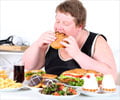Highlights
- Kids meals available in restaurants should not exceed 600 calories.
- Appropriate calorie intake is challenging even when restaurants list the calorie counts for each menu item.
- Limiting portion size to adjust to the calorie count can help reduce overeating in restaurants.
The findings highlight the importance of the upcoming rollout of calorie labeling on most restaurant menus, providing operators with an opportunity to reduce portion sizes so they are more appropriate to meet children's needs, according to researchers.
A consensus of 15 child nutrition experts convened for the study recommended a maximum of 300 calories from main dishes for kids' meals. Other recommendations include 100 calories for a serving of fried potatoes, 150 calories for soups, appetizers and snacks, and 150 calories for vegetables and salads that included added sauces.
No recommended limit was made for vegetables and fruits that have no added oils or sauces. Kids meals also should include no more than 110 calories of unflavored milk. The entire meal should not exceed 600 calories.
Using the expert guidelines, a burger or a serving of macaroni and cheese should have no more than 300 calories, but the study found that the average calorie content for those items in restaurants was 465 and 442, respectively.
What restaurants offer children is important because they eat out often. According to a study by the federal Centers for Disease Control and Prevention, on any given day 1 of 3 children and 41 percent of teenagers eat at fast-food outlets. The Economic Research Service of the U.S. Department of Agriculture reports that 50 percent of all food dollars are spent on meals away from home.
"The public may want to consider how they are at a disadvantage to prevent childhood obesity when so many food outlets serve foods in quantities that put their children at risk," Cohen said. "It is too difficult for children and their parents to limit consumption when they are served too much."
Cohen said the restaurant industry has an opportunity to embrace these calorie guidelines established by child nutrition experts by adjusting kids' menu offerings accordingly in support of promoting children's health and reducing childhood obesity. "Ultimately," she said, "this could mean good business for restaurants."
Reference
- Deborah Cohen et al., Kids' restaurant menu items often include excess calories, Nutrition Today (2016).
Source-Medindia















